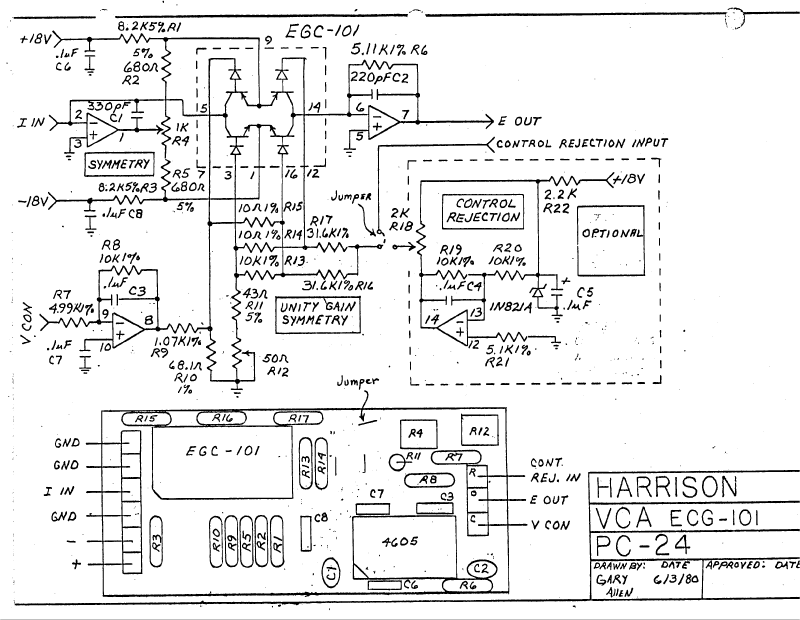[quote author="mediatechnology"]Here's the ECG-101 data that was sent to me along with the sample I received close to 30 years ago:
http://www.ka-electronics.com/images/Valley_People_ECG-101.pdf
He cites the Blackmer Multiplier Patent 3714462:
http://www.ka-electronics.com/images/Blackmer_Patent_3714462.pdf
Looks like to me that you could use a
THAT 340 transistor array to make an ECG-101.
In the "where are they now" category here's Paul Buff's current website: http://www.paulcbuff.com[/quote]
Yup, Paul escaped the audio biz years ago... more power to him.
If you roll your own VCAs I'd be careful about taking the schematics literally, I think the diodes shown inside the EGC-101s may have been diode connected transistors (probably b-e junctions). Perhaps NPNs in the PNP bases and vice versa.
Yup, THAT arrays would probably work well. Might take 2 per if my speculation is correct about the diodes being transistors.
JR




